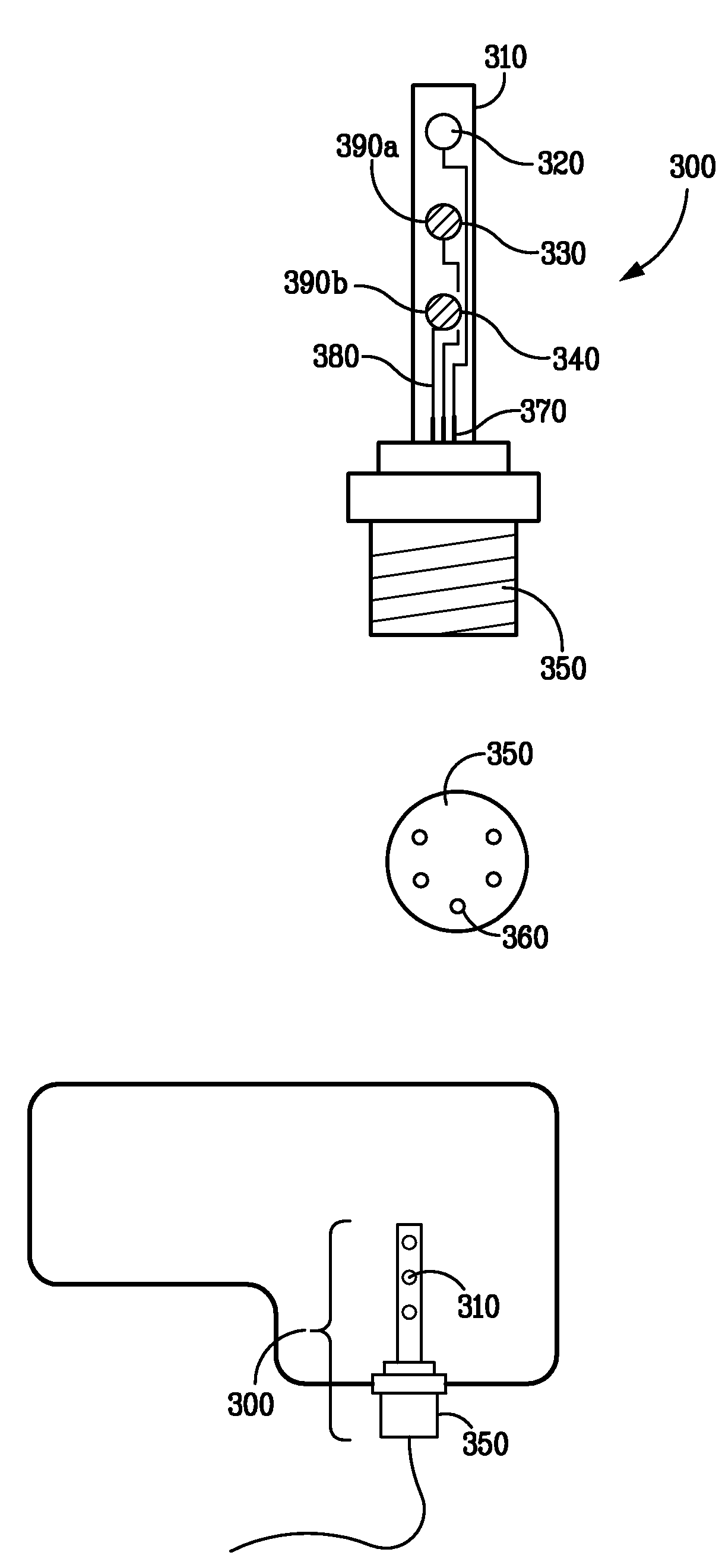Oil monitoring system
a monitoring system and oil technology, applied in the direction of resistance/reactance/impedence, measurement devices, instruments, etc., can solve the problems of inconvenient ‘on-the-fly’ testing, complex determination of oil quality, and inducing vibrational excitation of covalently bonded atoms and groups
- Summary
- Abstract
- Description
- Claims
- Application Information
AI Technical Summary
Benefits of technology
Problems solved by technology
Method used
Image
Examples
Embodiment Construction
[0035]FIG. 2 illustrates an exemplary real-time oil monitoring system 200 as may be implemented in accordance with an embodiment of the present invention. An embodiment of the oil monitoring system 200 may comprise a monitoring device 210 for receiving and analyzing data generated by a sensing element 220, which is in contact with the oil or other fluid under observation.
[0036]Data generated by the sensing element 220 may be communicated to the monitoring device 210 via a sensor signal cable 230. Sensor signal cable 230, in one embodiment of the present invention, is an RS-232 compliant serial cable wherein one end of the cable is configured to exchange data with the monitoring device 210 and the opposite end of the cable is configured to interface with sensing element 220 as is discussed in greater detail in FIG. 3. Other data cables are within the scope of the present invention subject to proper configuration to allow for interface with the sensing element 220 and monitoring devic...
PUM
| Property | Measurement | Unit |
|---|---|---|
| operating temperatures | aaaaa | aaaaa |
| diameter | aaaaa | aaaaa |
| alternating current | aaaaa | aaaaa |
Abstract
Description
Claims
Application Information
 Login to View More
Login to View More - R&D Engineer
- R&D Manager
- IP Professional
- Industry Leading Data Capabilities
- Powerful AI technology
- Patent DNA Extraction
Browse by: Latest US Patents, China's latest patents, Technical Efficacy Thesaurus, Application Domain, Technology Topic, Popular Technical Reports.
© 2024 PatSnap. All rights reserved.Legal|Privacy policy|Modern Slavery Act Transparency Statement|Sitemap|About US| Contact US: help@patsnap.com










